
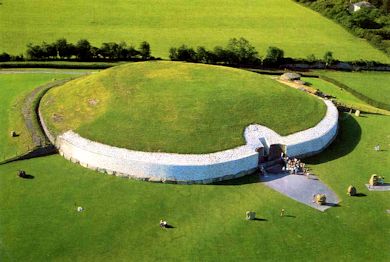

The Daily Diary of a Wandering Restaurateur
Hangin' With the Oldies
The big trip of the day was to Newgrange, a 5,000-year-old passage tomb, a massive grass-covered burial mound on top of a hill, with a chamber inside reached by a narrow stone passage. It is at once mysterious, thought-provoking and mind-bogglingly old. The gray day, chill wind and intermittent rain seemed perfect for the chilling experience of finding yourself deep under a man-made construction of earth and stone that pre-dates the pyramids.



The inhospitable weather and the prohibition against photography inside the tomb meant I have to
tell the story with photos from others ... but in looking at the shots, I realized they wouldn't mean much to you without a
little more of an orientation. There are three major mounds and dozens of smaller ones around the area. Newgrange, the only
one that allows you to go inside, is 250 feet across and 40 feet high and dates from 3200 BC -- 500 years older than the
pyramids at Giza. The base of the mound is ringed by dozens of "kerbstones," each about nine feet long and weighing five
tons.
The white facade you see at the entrance is a mosaic of white quartz and dark granite. There is a single 60-foot long
passage lined with big boulders that leads into the small central chamber. The passageway is so aligned that on the winter
solstice, December 21, a ray of light enters through the roofbox (the opening above the entry), creeps slowly down the
passageway and for 17 minutes lights the center of the sacred chamber. Then for the next 364 days, the tomb site sits in
total darkness. The graphic above illustrates how all this works.
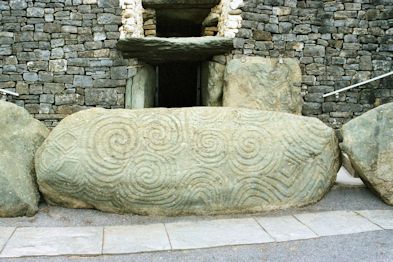
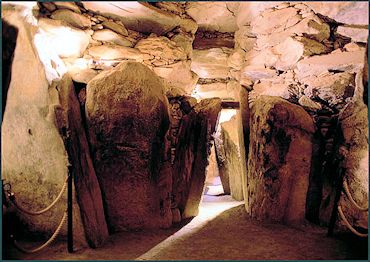
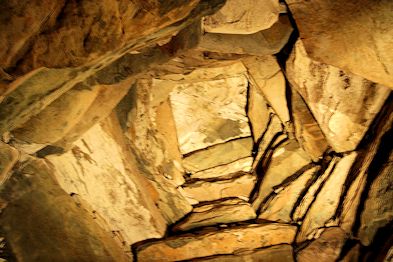
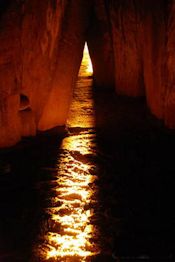
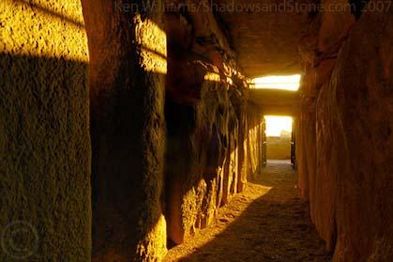
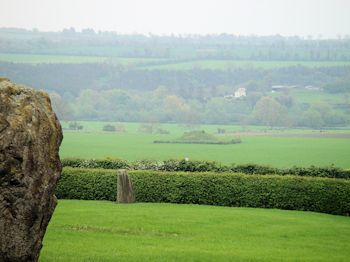
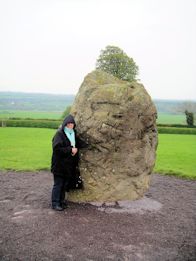
From left to right across the top: The entry to the passage with the roofbox above. The giant
kerbstones are in their original positions (stairways were built to allow people to walk up, over and the behind the
primary kerbstone to enter the passageway. The spiral and geometric decorations are seen carved into stones both inside
and outside the tomb. The passageway itself is narrow and a bit of a squeeze in spots ending in a cross-shaped central
chamber about 20 feet high with an igloo-type stone dome. Bones and ashes were placed here in a ceremonial stone basin,
under200,000 tons of stone and dirt.
Assuming it's not overcast, on the shortest day of the year the rising sun sends a shaft of light creeping along the
passageway into the central chamber. Perhaps this was the moment when the souls of the dead were transported to the
afterlife via that ray of life-giving and life-taking light. Nobody is exactly sure. From the mouth of Newgrange, you can
see another small mound in the neighboring field. Even the standing stones positioned around the mound are massive.
The five-ton stones had to be brought in from over 12 miles away, most likely by boat and then hauled overland using log
rollers and earthen ramps. The process of building a tomb the size of Newgrange likely took up to three generations to
complete. The fact that it survives intact today and that the central chamber has never seen one drop of water infiltration,
is a testimony to the engineering and construction intelligence of this ancient people.
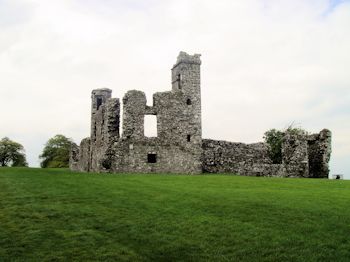
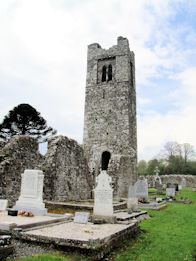
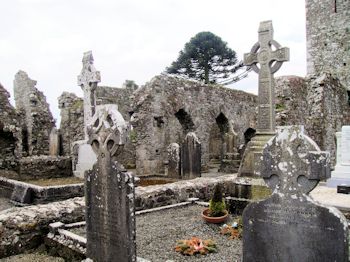
On the way back to Trim, we took a quick look at the Hill of Slane, site where St. Patrick publicly challenged Pagan law back in 433 AD by lighting a fire on the top of the hill. I won't go into the back story of why that was considered such a radical act, but it did firmly establish the Hill of Slane as an important site. All that's there now, besides grazing cows in a lower pasture, are the ruins of Slane Abbey (circa 1512) and an old cemetery. The oldest date I could read on a stone was 1793 but I'm sure there are others at least 200 years older.
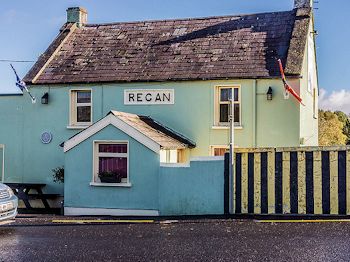
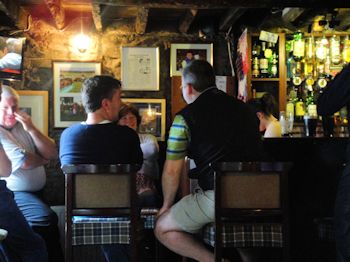
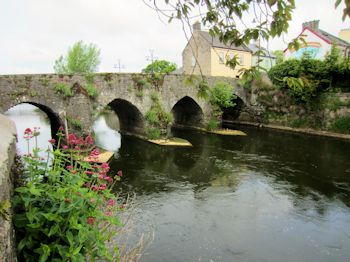
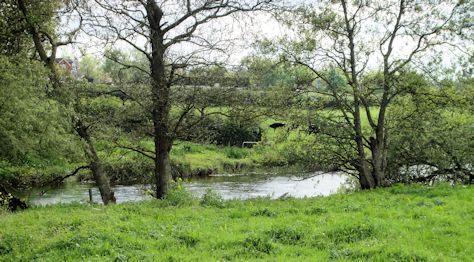
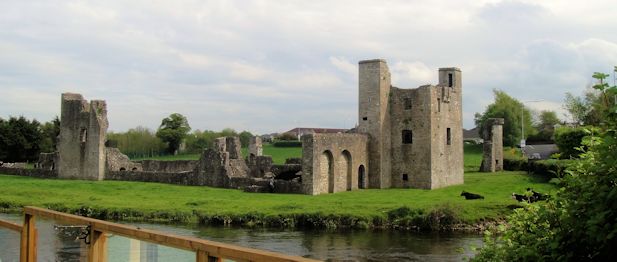
Back in Trim we did a wee bit of exploring while we had a short break in the weather, ending up along the river at Regan's Pub, a cozy, low-ceilinged affair by a 13th century Norman bridge. There is a footpath that runs along the shore from here into town but we never had enough time (or the weather) to walk it. Maybe on the next trip. As always, there are ruins all around the area. This one, across the river from Regan's was once a medieval hospital. I fear the state of medical practice at the time would seem barbaric today but at the time it was at least a little better than doing nothing ... I think.
© 2014 Restaurant Doctor